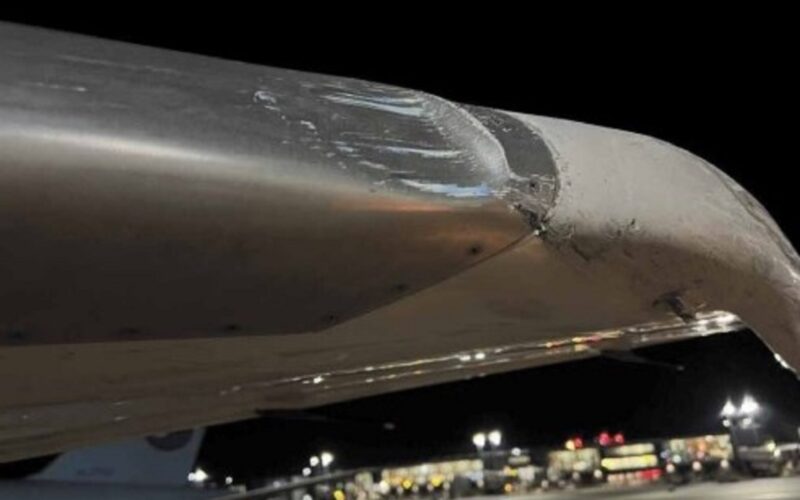The United Kingdom’s Air Accidents Investigation Branch (AAIB) has concluded its investigation after a Korean Air and an Icelandair Boeing collided at London-Heathrow Airport (LHR).
Both aircraft were damaged in the incident on September 28. 2022, at 6:50pm, which involved a Korean Air Boeing 777-300 and a smaller Icelandair Boeing 757-200.
The AAIB published a report into its findings on June 8, 2023, revealing that similar incidents had occurred at Heathrow.
According to the AAIB there were a number of factors that came together to cause the two jets to collide, but a key issue was that the Icelandair aircraft was not parked fully.
The report indicated that the Icelandair Boeing 757 was waiting to park on stand and the Boeing 777 attempted to taxi behind it.
The Boeing 777 pilots saw the Boeing 757 protruding from the stand but considered it was safe to continue taxiing. Air Traffic Control had cleared them to do so and they had green taxiway lights ahead.
The Korean Air crew also reported that the anti-collision light on the Icelandair jet appeared to be off, suggesting it was fully parked. However, CCTV evidence showed the anti-collision light was in fact switched on.
Another factor that led to the collision was that Air Traffic Control could not see the parking stand from the visual control tower. Ground radar did not show the Boeing 757 once it had turned onto stand, so the controllers had no way to know the aircraft was not fully parked.
Additionally, when the Boeing 757 approached the parking stand, the guidance system was not switched on.
Heathrow instructs pilots to remain on the taxiway centerline in these circumstances, but the Icelandair pilot said he normally initiated the turn before seeking guidance and was not aware that this could cause a problem.
“The rule to stop on the centerline and inform Air Traffic Control is the primary barrier to prevent this type of accident,” the AAIB stated in the report.
The pilot revealed that they did not inform the ground controllers due to congestion on the ground frequency.
The AAIB found no cockpit recording between the crew discussing contacting Air Traffic Control until after the collision.
Lack of guidance when arriving on stand is reported to be a regular problem at Heathrow.
On the day of this accident, it was reported that the problem was exacerbated by staff shortages, caused by the closure of one of the tunnels used to access the central area.
“A lack of resources in one part of a system can have a safety consequence in another part of the system, with the potential to contribute to an accident. In this case, pilots and Air Traffic controllers inherited a problem initially caused by ground staff shortages,” the AAIB remarked.
Indeed, a similar incident occurred on 16 August 2022, just six weeks before this event. On the previous occasion, a Boeing 787-800 took off without the pilots knowing their aircraft was damaged, having hit a Boeing 787-900 that was not fully parked.
The Boeing 787-800 continued its flight to its destination, but it was only down to luck that the damage was minor and a more serious accident did not occur.
Conclusion
“The collision occurred because the commander of the Boeing 777 continued to taxi past the protruding Boeing 757, believing it was fully parked and that the Air Traffic Control clearance and green taxiway lights implied the route was clear. The commander of the Boeing 757 did not follow the Heathrow instruction to remain on the centerline if no stand guidance is available, because his normal practice was to look for guidance after he had turned onto the stand,” the AAIB concluded
The report added: “The initiating event was a lack of stand guidance when the B757 arrived on stand, caused by ground staff shortages. Lack of stand guidance is a common occurrence at Heathrow that all parties should continue to work together to address.”
There were 18 crew members and 199 passengers on the Korean Air jet and on the Icelandair aircraft there were six members of crew and the number of passengers was unknown.
There were no injuries reported.

